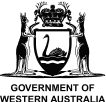Westport has partnered with the Western Australian Marine Science Institution (WAMSI) to deliver the $13.5 million WAMSI-Westport Marine Science Program. This 3-year program is developing the latest data, information and modelling on the complex environmental systems and community values associated with Cockburn Sound.
Project 2.2 – Executive summary: Key findings to inform Environmental Impact Assessment and Management for the proposed Westport development and for managing and building resilience under a changing climate in temperate seagrass communities
Theme: Benthic habitats and communities
Researchers: G. Kendrick, J. Verduin, G. Ferretto, R. Austin, H. Evans, M. van Keulen. (2025)
Identifying options to significantly and successfully increase seagrass restoration in Cockburn Sound
Seagrass meadows are critical to the ecological health of Cockburn Sound. This study focused on understanding how temperate seagrasses respond to environmental pressures such as dredging, sediment burial, light reduction and ocean warming.
Temperature was identified as a key driver of long-term seagrass decline, with two decades of monitoring data linking warming trends to reduced shoot density.
To build resilience, the study suggests prioritising restoration in low-density meadows, enhancing genetic diversity and exploring assisted migration using thermally resilient populations. It also identifies areas where species have persisted in the face of climate change, such as the Ngari Capes region, where seagrass meadows are in better condition and more resistant to warming.
The project considered:
- The effectiveness of seed-based and shoot-based methods
- The impact of location, seagrass variety and method on restoration success
- How sediment or dredging waste could be used to enhance restoration
- How local community programs can support restoration activities.
How Westport will use the report
Westport will use this report to inform activities to significantly scale up seagrass restoration in Cockburn Sound both before and after the development of the new port. The outcomes from the report will play a critical role in refining this restoration program, as well as providing baseline data used for Westport’s environmental impact assessment.





